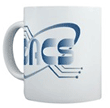July 10 , 2007 |
Digital technologies in the form of CDs and mobile devices such as iPods, MP3 players, etc. have made it easy to take the music that you like with you wherever you go. Home computers are also part of digital convergence where the computer acts as a media center – a repository for music and video that may feed various devices around the house. But, what do you do if you have a collection of music that is in analog format such as LPs, 45s, tape cassette, reel-to-reel, or even 8-track? You’d be hard-pressed to call any of these formats as lending themselves to a mobile life style. Further, the quality of magnetic recordings (tape) is known to deteriorate over time, and both tape and disk are subject to physical damage or deterioration with age. Take heart – there is free software available that, when used with the addition of an inexpensive cable or two, will let you transfer your analog music collection to digital format, CD or MP3, and thus into today’s devices. At the July 10th meeting (note that due to the July 4th holiday it is one week later in the month than usual) DACS member Bruce Preston will present the multi-platform program Audacity. Yes, it is available for Windows, Mac, as well as Linux. Bruce will:
This meeting is a must for all of those who have been holding on to those precious recordings in the hope of converting them easily to digital audio DACS meetings are held at the Danbury Hospital auditorium. Activities begin at 6:30 p.m. with registration and casual networking. The meeting starts at 7:00 p.m. with a general question and answer period (Ask DACS) and a discussion of what’s new in technology followed by a short break. The featured evening presentation begins at 8:00. As a reminder, our General Meetings are free and open to the public so invite anyone you know who would be interested in this topic. |
Mugs and more, visit CafePress to order
